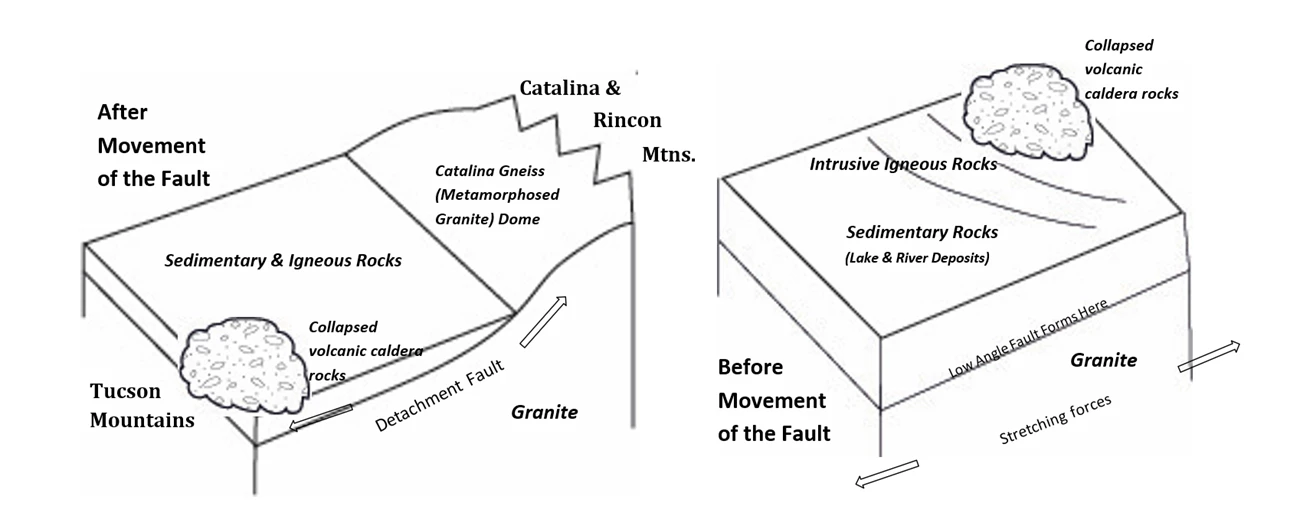Rocks on the MoveScientists estimate that saguaro cactus have been growing in this area for anywhere from 4,000 to 8,000 years, but the rocks they grow on are more than a bit older! Eruption and Collapse Event70 - 75 million years agoGeologists know that our seemingly solid landscape is the result of slow movement of large plates of earth's crust jostling each other atop flowing molten material underneath. About 75 million years ago, a Pacific ocean floor plate rammed into the larger and lighter North American plate. Heavier ocean crust was driven downward in a process called subduction. Friction of the two plates rubbing against each other melted the descending oceanic rocks charged with sea water. Bubbling to the surface, the molten rock and super-heated water blasted out in a series of enormous volcanic eruptions, which, within a few million years, created at least seven major volcanoes in what is now southern Arizona. Each of these explosive features would be marked by a large collapse feature called a caldera: a huge bowl rimmed by volcanic rock and ash. The Wide Stretch Event20 - 30 million years agoAnother round of earth movement began 20 - 30 million years ago when forces in Arizona stretched and thinned the earth's crust. Great cracks (faults) formed, and huge slabs of crust moved in relation to each other. Tilted, horizontal breaks (detachment faults) formed. In this area, slices of upper rocks were pulled south by west; underlying granites moved up into the spaces left behind. Enormous pressures along the fault were caused by the weight of the upper rocks and the earthquakes associated with fault movement. These pressures transformed the granite into new rocks, including cataclasite and mylonitic gneiss. 
NPS photo What to See TodayRincon Mountain District
Tucson Mountain District
|
Last updated: January 26, 2025
